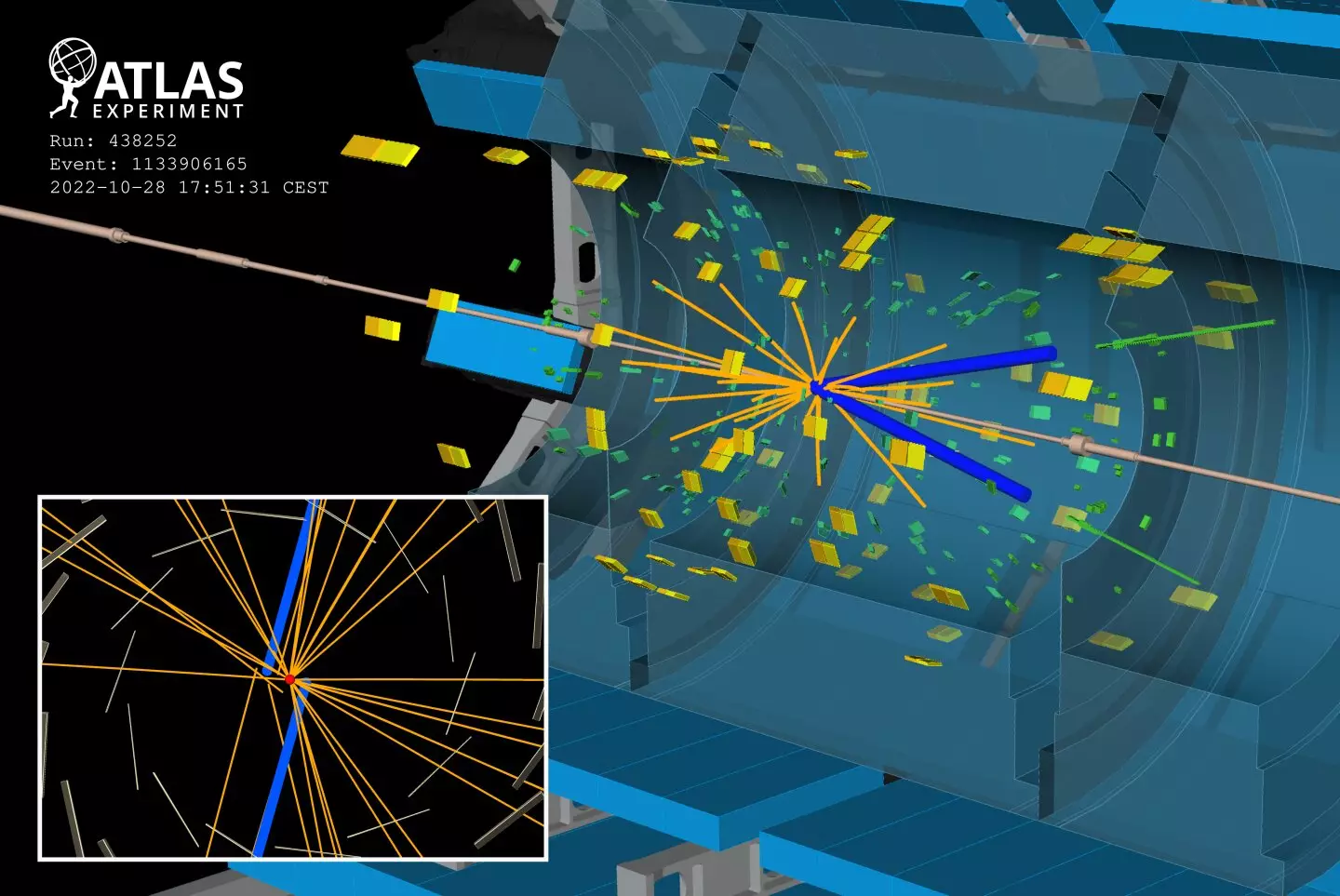The field of particle physics is dominated by the Standard Model, a robust framework that elegantly describes the fundamental particles and forces that compose the universe. Despite its remarkable success, the Standard Model is far from perfect. It leaves many questions unanswered, hinting at a more intricate reality lying beyond its mathematical equations. The pursuit of new physics phenomena has become a bustling area of research, as scientists aim to unveil deeper truths about matter, forces, and cosmic interactions.
Recent developments from cutting-edge experiments, particularly those conducted at the Large Hadron Collider (LHC), are stirring up a sense of excitement and urgency among physicists. Discussions at the International Conference on High-Energy Physics (ICHEP) held in Prague in July 2024 underscored the passion and fervor surrounding the search for hypotheses that extend beyond the Standard Model. The ATLAS collaboration’s latest findings at the LHC shine a light on some of the most intriguing particles theorized in speculative physics.
The Allure of Magnetic Monopoles
Among the intriguing concepts explored is the magnetic monopole—a hypothetical particle that possesses only a single magnetic charge as opposed to the duality of magnetic poles we regularly observe. The existence of monopoles would not only validate long-standing theories of electromagnetism but also advocate for grand unified theories that seek to envelop the strong, weak, and electromagnetic forces into a cohesive understanding at ultrahigh energies.
Current experimental efforts at the LHC focus on heavy-ion collisions, which generate an unparalleled environment for investigating the properties of magnetic monopoles. Researchers from the ATLAS collaboration recently analyzed data collected from lead-lead collisions at a staggering energy of 5.36 TeV per nucleon pair. The search zeroes in on ultraperipheral collisions, where lead ions come extraordinarily close but do not collide directly. In these scenarios, the resulting magnetic fields can reach mind-boggling strengths of up to 10^16 Tesla, a prospect significant enough to generate conditions ripe for the creation of magnetic monopoles.
Despite their efforts, the ATLAS team has not detected any signs of monopoles in the latest run of heavy-ion collision data. Nonetheless, this exercise has yielded the most stringent constraints to date on monopole production rates, overturning previous assumptions and beliefs regarding their existence. This meticulous approach brings forth a methodology for tracking highly ionizing particles, a potential cornerstone for future explorations in particle physics.
Long-Lived Particles: A Hidden Universe
In addition to magnetic monopoles, ATLAS’s search extends into the realm of long-lived particles, which hold the promise of revealing new dimensions of physics. These particles can arise in supersymmetry and other beyond-the-Standard-Model theories. Unlike traditional particles that decay rapidly at the interaction point, long-lived particles can traverse significant distances before they decay, resulting in unique signatures detectable in advanced particle detectors.
The innovative search by the ATLAS collaboration examined pairs of long-lived particles that each decay into leptons, allowing for the observation of displaced tracks—an intriguing indication of potential new physics. By analyzing the 13.6 TeV collision data from LHC’s Run 3, ATLAS has broadened the scope of its searches to include these innovative characteristics that were previously overshadowed by prompt decay scenarios.
The absence of detected long-lived particles in these explorations does not diminish the significance of the findings. Instead, the results are pivotal. They impose rigorous limits on the existence of supersymmetric partners corresponding to common leptons, shaping the future of research in particle physics with precision and clarity.
Innovative Methodologies and Future Prospects
The methodology advancements introduced by the ATLAS collaboration during Run 3 enhance experimental strategies for studying elusive particles. As new lighthouses guiding future searches, these enhanced techniques could play a crucial role in upcoming explorations at the LHC and its successor, the High-Luminosity LHC.
ATLAS researchers have redefined their approach to collision-event selection by incorporating the tracking of displaced tracks, heralding a new age for experimental physics. Such innovations will facilitate the quest to uncover the hidden realms of matter and energy while expanding our understanding of fundamental forces.
As the scientific community marches forward with renewed vigor and direction, the theoretical landscape of particle physics is poised for exploration. Upcoming data and experiments might just bring us closer to unlocking the secrets of magnetic monopoles, long-lived particles, and perhaps even the universe’s most elusive truths. With each new experiment, we inch toward an enriched comprehension of the cosmos, powering the passionate pursuit of knowledge that defines the very essence of science.

